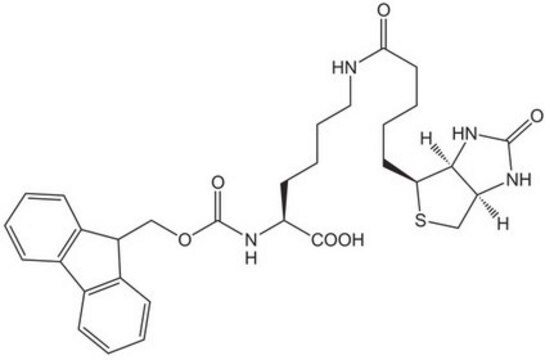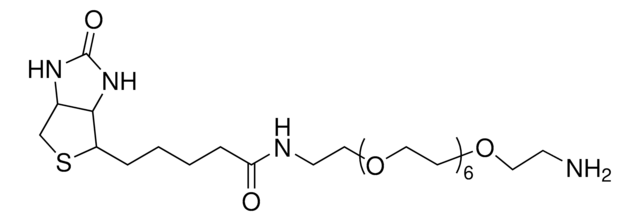QBD10199
dPEG®4-biotin acid
>95% (HPLC)
Sinonimo/i:
Biotin-PEG-acid, Biotin-PEG4-COOH, Biotin-PEG4-acid, Carboxy-PEG4-biotin, PEG4-biotin acid
About This Item
Prodotti consigliati
Saggio
>95% (HPLC)
Forma fisica
solid or viscous liquid
Impiego in reazioni chimiche
reaction type: Biotinylations
reaction type: Pegylations
Architettura del polimero
shape: linear
functionality: monofunctional
Condizioni di spedizione
ambient
Temperatura di conservazione
−20°C
Caratteristiche e vantaggi
Automate your Biotin tagging with Synple Automated Synthesis Platform (SYNPLE-SC002)
Note legali
Codice della classe di stoccaggio
11 - Combustible Solids
Classe di pericolosità dell'acqua (WGK)
WGK 3
Punto d’infiammabilità (°F)
Not applicable
Punto d’infiammabilità (°C)
Not applicable
Scegli una delle versioni più recenti:
Certificati d'analisi (COA)
Ci dispiace, ma al momento non ci sono COA disponibili online per questo prodotto.
Se ti serve aiuto, non esitare a contattarci Servizio Clienti
Possiedi già questo prodotto?
I documenti relativi ai prodotti acquistati recentemente sono disponibili nell’Archivio dei documenti.
Il team dei nostri ricercatori vanta grande esperienza in tutte le aree della ricerca quali Life Science, scienza dei materiali, sintesi chimica, cromatografia, discipline analitiche, ecc..
Contatta l'Assistenza Tecnica.


![O-[2-(Biotinyl-amino)ethyl]-O′-(2-carboxyethyl)polyethylene glycol Mp 3,000](/deepweb/assets/sigmaaldrich/product/structures/285/242/a1e6e88b-5b7d-43b5-9bb0-18dcbfdccf43/640/a1e6e88b-5b7d-43b5-9bb0-18dcbfdccf43.png)





